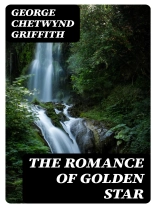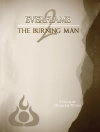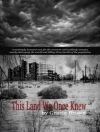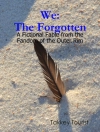In ‘The Romance of Golden Star, ‘ George Chetwynd Griffith presents a riveting blend of science fiction and romance set against the backdrop of an otherworldly colonial adventure. The narrative unfolds on the fictional planet of Golden Star, where diverse races and cultures collide amidst the echoes of both utopian dreams and dystopian realities. Through imaginative prose rich in descriptive detail and layered subtext, Griffith explores themes of love, sacrifice, and the ethical dilemmas inherent in exploration and conquest, all while embedding sharp social critique relevant to his time, particularly reflecting the tensions of the late Victorian age marked by imperial ambition. George Chetwynd Griffith (1857-1906), a prominent figure in early science fiction, was influenced by the burgeoning interest in space exploration and technological advancement of his era. Drawing upon his background in journalism and a profound fascination with astronomy, Griffith sought to push the boundaries of literary genres. His visionary works often intersect with contemporary political issues and the spirit of adventure, enabling him to comment on both human aspiration and despair in a rapidly changing world. I highly recommend ‘The Romance of Golden Star’ for both enthusiasts of speculative fiction and those seeking a profound exploration of human relationships in alien contexts. This novel is a timeless reminder of the complexities of love and ambition, positioning Griffith as a precursor to modern science fiction narratives.
Об авторе
George Chetwynd Griffith (1857-1906) carved a niche for himself in the galaxy of science fiction and speculative fiction writers during the late Victorian era, contributing to the genre with his imaginative storytelling and adventurous plots. A contemporary of H.G. Wells, Griffith captured the fascination of his readers with speculative and sometimes prophetic depictions of science and technological advancement (Stableford, 2017). ‘The Romance of Golden Star, ‘ published in 1891, exemplifies his penchant for crafting tales that blend historical romanticism with science fiction elements, displaying his narrative dexterity and ability to entertain while subtly critiquing societal norms of his time. Griffith’s literary style is noted for its vivid description, dynamic characters, and a forward-looking perspective that often anticipated future events and inventions (Seed, 2016). His other prominent works include ‘A Honeymoon in Space, ‘ where he envisioned space travel long before it became reality, and ‘The Angel of the Revolution, ‘ which reflects his interest in aerial warfare and political upheaval (Clute & Nicholls, 1995). Though less known than his peers, Griffith’s oeuvre remains an important part of the foundation of science fiction literature.












